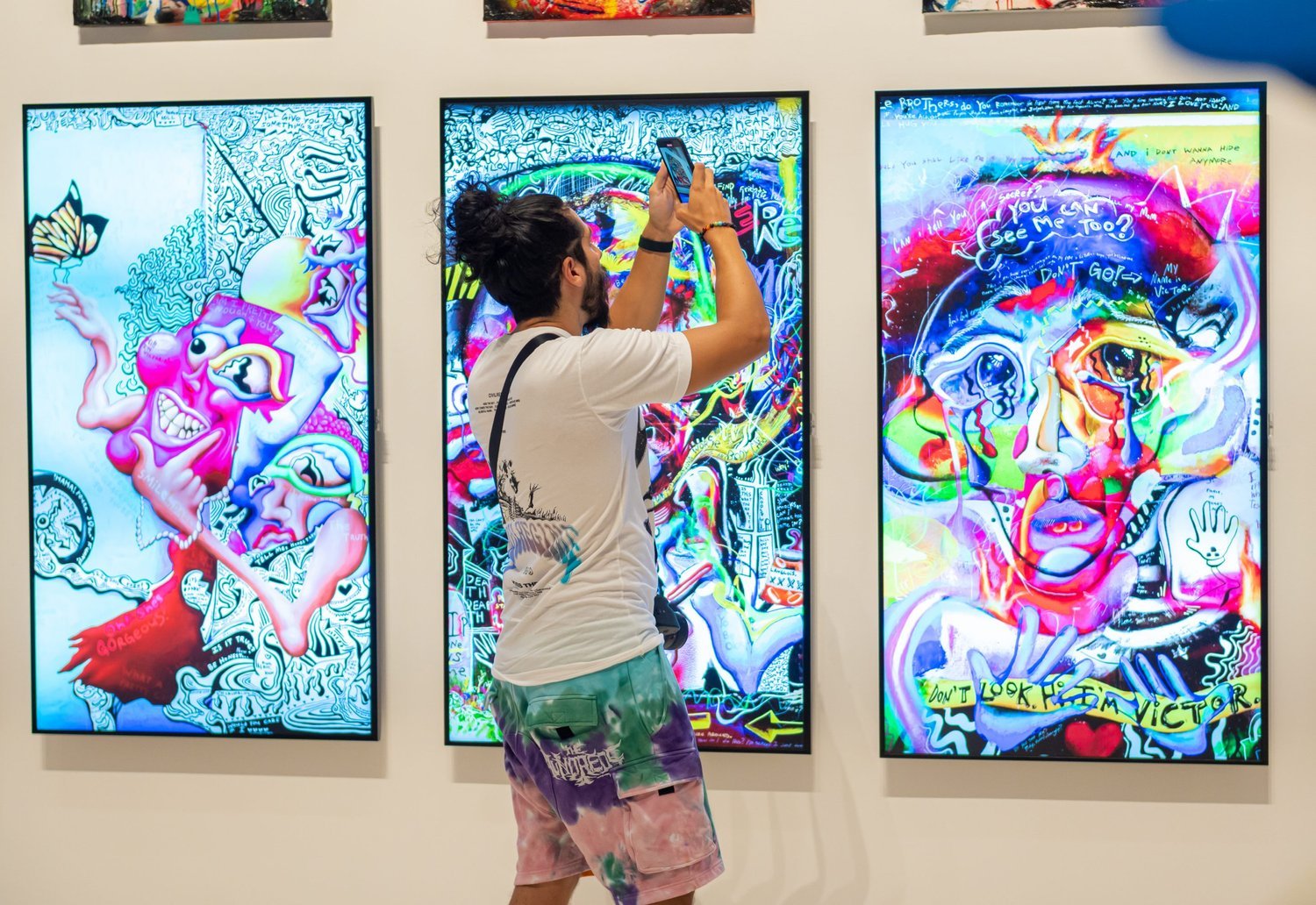Crypto Art and Non-Fungible Tokens
Person at digital art gallery (Fortune)
By Rishi Gupta
While 2020 will mostly be remembered as a time of Covid-induced economic and societal pain, it was also the time when people started thinking about the marriage between technological advancements and economic value. The thought that digital footprints are trackable and digital creations could have economic value is what led to the creation of NFTs—non-fungible tokens. These tokens have been used by almost everyone, but it has been particularly helpful to the art industry.
What are NFTs and how do they work?
Non-fungible tokens are like one of a kind trading cards—they are unique and can’t be replaced with anything else. While bitcoin can be traded for another, if you trade NFTs, you will not get back the same thing. But what exactly is an NFT? An NFT is simply a token that is unique and non-interchangeable, that represents something digitally. It could be used to represent art, drawings, music, a tweet, or even an Instagram post. In fact, Jack Dorsey sold his first tweet for just under $3million. At the moment, most NFTs are part of the Ethereum blockchain, making them part of the crypto economy. While Ethereum’s 4000% increase in value suggests that NFTs will be super popular in the future, it could be worth understanding how they have helped artists so far.
Artists and Living Standards
Artists have notoriously struggled to sell their work, with only about 30% of artists having guaranteed financial stability while 45% need to rely on other jobs to make a living. While a few of them are fortunate enough to get their work up in art galleries and auctions, most remain unknown, with no way to show the world their art. The rise of NFTs seems to be tackling this problem well. Typically, when an artist sells his or her work digitally, there is a fear of replication and therefore devaluation of the piece. However, on the NFT marketplace, all transactions are recorded by the blockchain algorithms so that the digital piece itself will always have a digital footprint. Think about it this way—anyone can own a Monet print, but only one person can own the real piece. Blockchain ensures the same for digital NFTs.
This has caused several artists to start selling their work as NFTs, giving them access to an economy that would allow them to pursue their careers more effectively. Not only would this boost economic growth in countries with a large number of artists, it would also increase the living standards of all artists who choose to sell their artwork using NFTs. This is speculative as we have still not seen a positive effect in living standards since the birth of NFTs, at least partly due to the pandemic’s universally damaging effects, but several tech entrepreneurs like Dominik Schreiner believe that “token economies will be transformative” for improved economic development.
Hold your horses
While the use of NFTs would certainly improve artists’ living standards, the idea that it will become mainstream so quickly is kind of farfetched. The idea of owning a digitally real but intangible item is still foreign right now and most of the sales have been overblown to the public. Since a creator's aim is to expand the accessibility of their art, ownership of their work is a completely different thing; increasing accessibility is done by allowing more people to access your art, but owning the piece comes at a price—you need to understand the value of what you own. A majority of people today feel unsafe engaging in trade with NFT’s because they don’t completely understand the value of a “Nyan Cat”, a one of a kind crypto-art.
There are also certain problems that artists face while selling their art as NFTs. Since NFTs work like stocks, they can be sold as they appreciate. What happens if I trade a piece of art I purchased? Today, the artists get no compensation for the increase in the value of their creation. However, there are several algorithms being developed that would allow artists to receive a percentage of this transaction as a “Creation cost.” This would encourage artists to use this market, again, improving their general financial stability. But this technology is still in its infancy and it could be a while before it can be properly implemented.
The Future of Crypto-Art
There’s no doubt that NFTs are the latest trend to have taken the spotlight, and this phenomenon has certainly made for some fascinating headlines. NFTs may not have been around for a particularly long time, but some crypto-art have already sold for tens of millions of dollars. They can certainly be lucrative, but the question is whether they would have a positive effect, boosting growth and artists’ living standards. Only time will tell.

